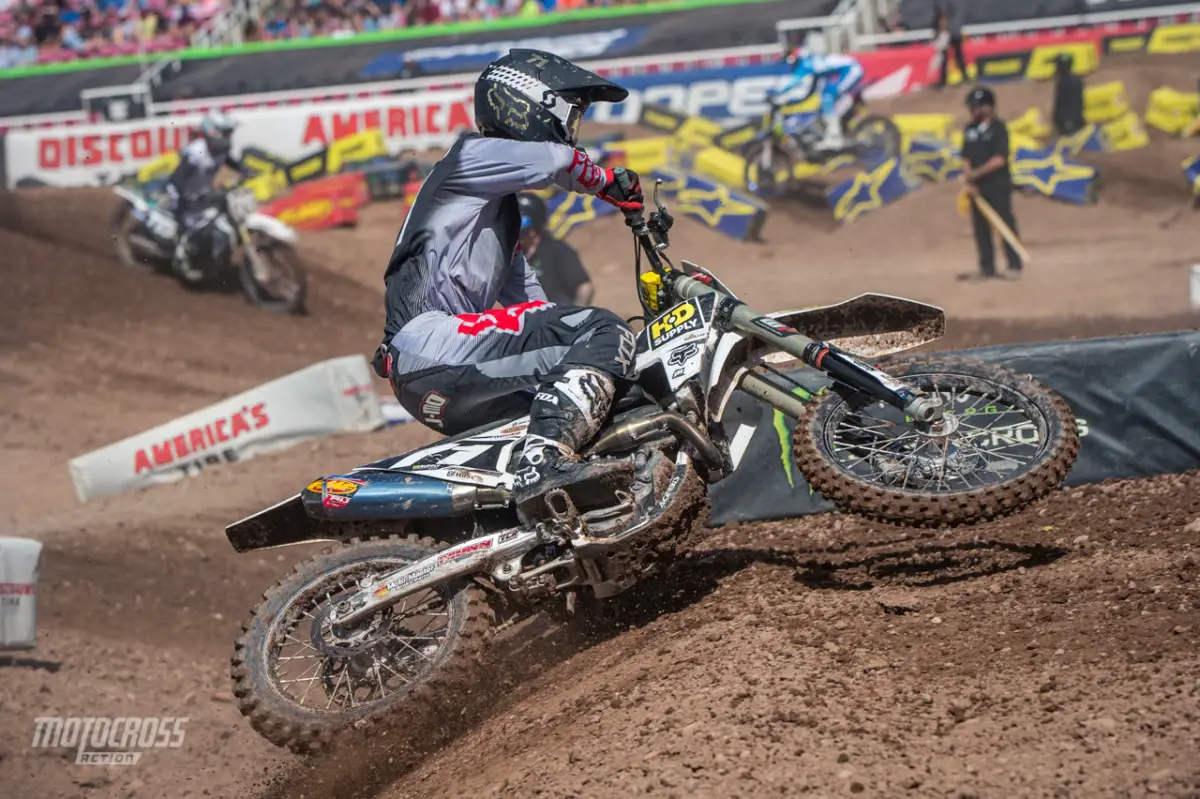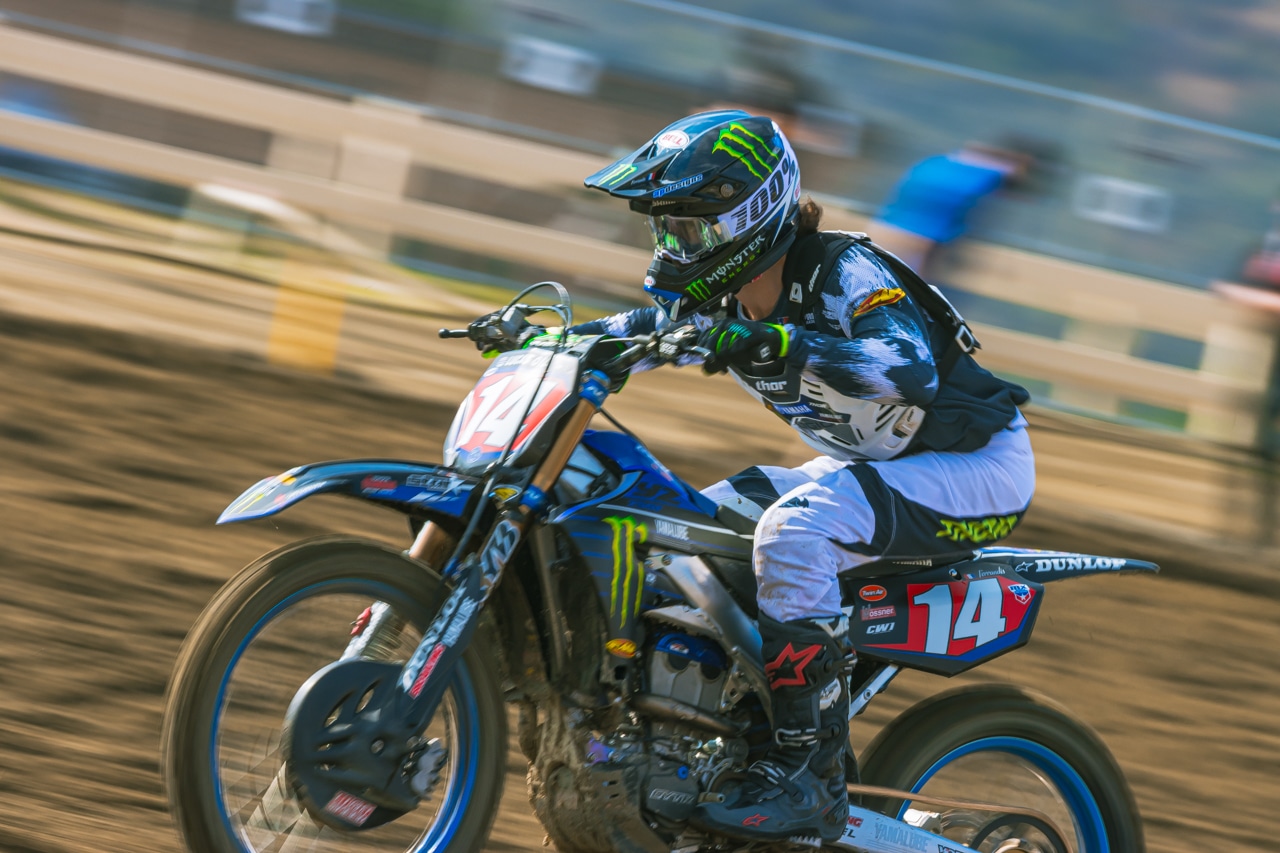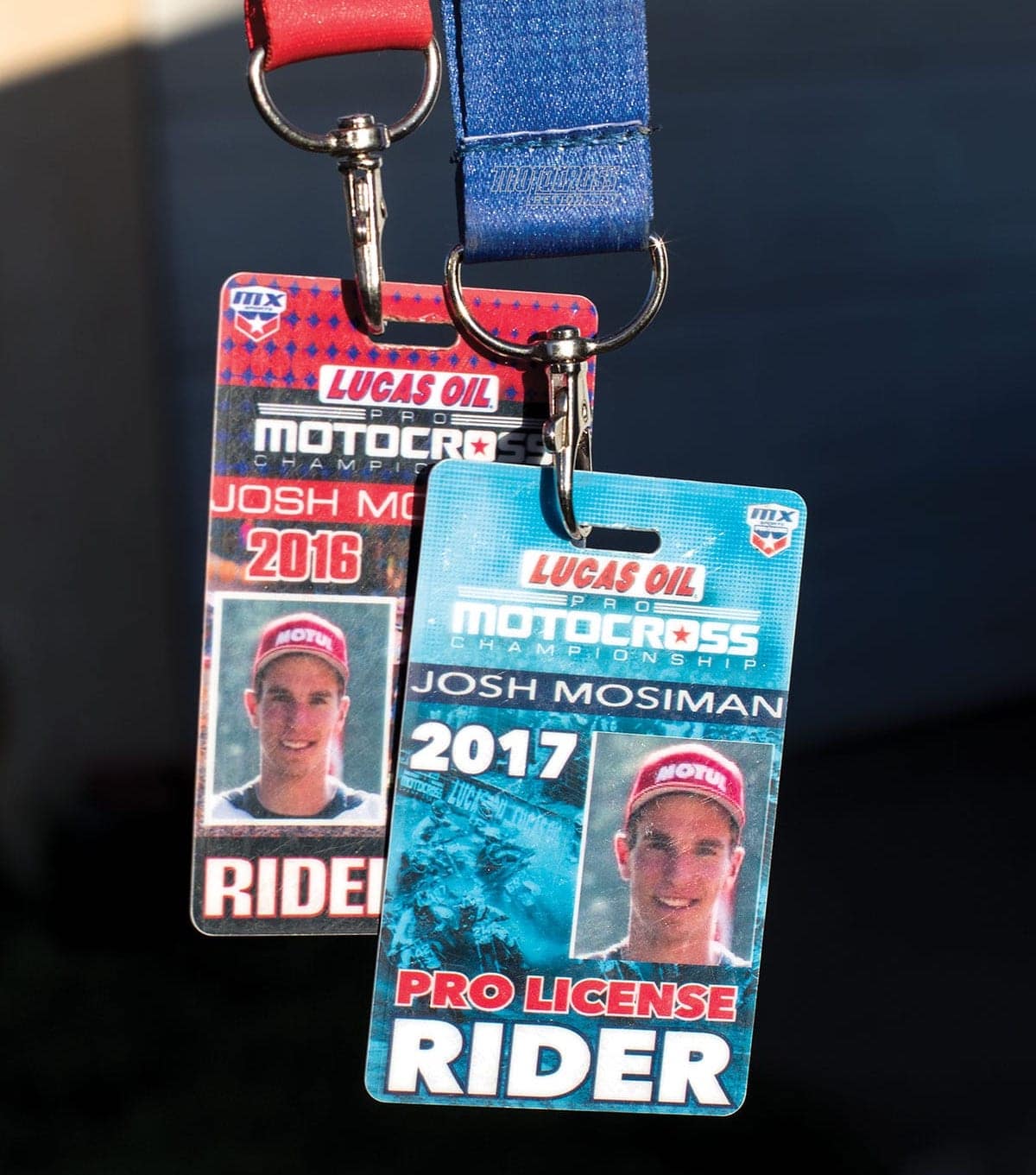TEN THINGS ABOUT EARNING YOUR AMA PRO LICENSE
TEN THINGS ABOUT EARNING YOUR AMA PRO LICENSE
By Josh Mosiman
(1) Going Pro. Every AMA Pro started out in the Amateur ranks and had to go through some sort of process to turn Pro. When it came to earning an AMA Pro license in years past, riders would only need to score points at Pro-AM motocross races to earn a license for both motocross and Supercross. Although, the AMA hasn’t always enforced that rule. Some riders have been able to advance from amateur to Pro with little or no experience at the Pro-AM events. For example, Adam Cianciarulo went straight from winning the Supermini class at Loretta Lynn’s in 2012 to racing the 250 Pro class at the Budds Creek National in 2013 without racing in Pro-AM events to earn points.
(2) Motocross requirements. To earn an AMA Pro Motocross license without special AMA exemption, riders must be at least 16 years old. They must have earned at least 60 AMA Pro-AM advancement points in a single class or have finished in the top 42 in either the Open Pro Sport or 250A classes in one of the last two years at the AMA Amateur National Motocross Championship finals at Loretta Lynn’s.
(3) Pro-AM points. AMA Pro-AM motocross events across the country provide the main path to a professional motocross license. At the time of applying for a license, riders must have accumulated their 60 advancement points over the previous 18 months. Points are based on overall finishes in either the 250A Pro-AM or the Open Pro Sport Pro-AM classes, but they cannot be combined.
 Josh Mosiman (71) on his HD Supply Husqvarna at the Salt Lake City Supercross two years ago.
Josh Mosiman (71) on his HD Supply Husqvarna at the Salt Lake City Supercross two years ago.
(4) Road to Supercross. Riders can no longer obtain a Supercross license through Pro-AM events or by racing the AMA Nationals. The tide has turned, and the AMA has decided to send its riders through Supercross-style races to qualify for a Pro license. Originally, riders were required to go through the Arenacross Road to Supercross program to earn points, but now, the Supercross Futures amateur days have taken over that spot. Supercross Futures acts as a feeder system for upcoming Supercross riders and gives amateurs the opportunity to ride in an actual stadium setting.
(5) Supercross Futures points. At the Supercross Futures Amateur day events, only in the “250 Supercross Futures” class can riders earn points towards their Supercross license. Six points are required. The number of points up for grabs is determined by the number of riders who sign up for the class. The maximum points available in each race is three, meaning that the riders will need to compete in a minimum of two Supercross Futures events to earn their license.
(6) Concussion testing. The ImPACT concussion test is an FDA-cleared medical evaluation used to assist in determining when a rider should be allowed to return to competition after suffering a concussion. All riders are required to complete the baseline test before applying for an AMA Pro license, and it must be renewed every two years. The test measures visual and verbal memory, reaction time and processing speed. The test takes about 20 minutes, and the program is accessible on any computer with internet. After a rider suffers a concussion, he must pass the post-injury ImPACT test to be allowed to compete again.
 International riders like Dylan Ferrandis don’t need to jump through the same hoops as American riders.
International riders like Dylan Ferrandis don’t need to jump through the same hoops as American riders.
(7) Requirements for foreigners. If a foreign rider wants an AMA Pro Supercross or motocross license, he doesn’t need to go through the Supercross Futures or Pro-AM process. Instead, he only needs to submit an AMA rider release form from his home country’s motorcycle federation stating that the federation agrees that the rider has the competence and ability to compete in professional Supercross and/or motocross.
(8) Start permission. Foreign riders can also obtain a “start permission release” from their federation. These licenses are considered provisional, and they aren’t complete until the rider competes in his first three events without issues. If the rider isn’t up to par at any time, even after the first three events, the AMA has the authority to revoke the license. Also, “start permission” riders will not be eligible to earn a two-digit AMA National number.
(9) Classes. In Supercross, riders must qualify into the evening program at least one time in the 250 class before they can jump up to the 450 class. In the Pro Motocross series, riders can sign up for the 450 class as their debut race without any prior experience in the 250 class.
(10) License application. Once a rider has qualified for his Supercross license through the Road to Supercross program, the rider has two competition seasons to apply for his license before having to re-qualify. When renewing a license after it has been expired for three years, the rider must meet the present requirements for a license. But, this too can be waived through the AMA appeal process.






Comments are closed.